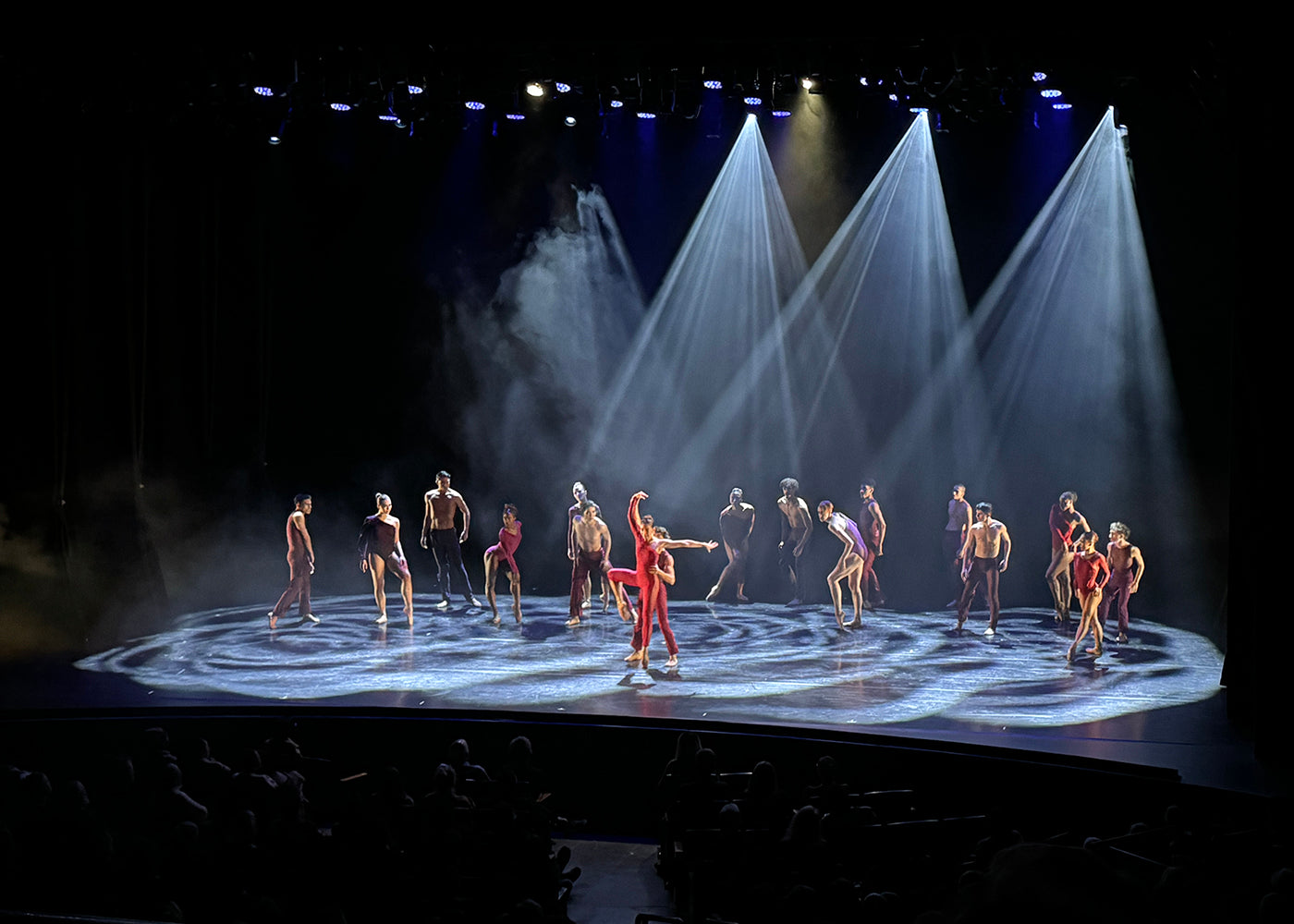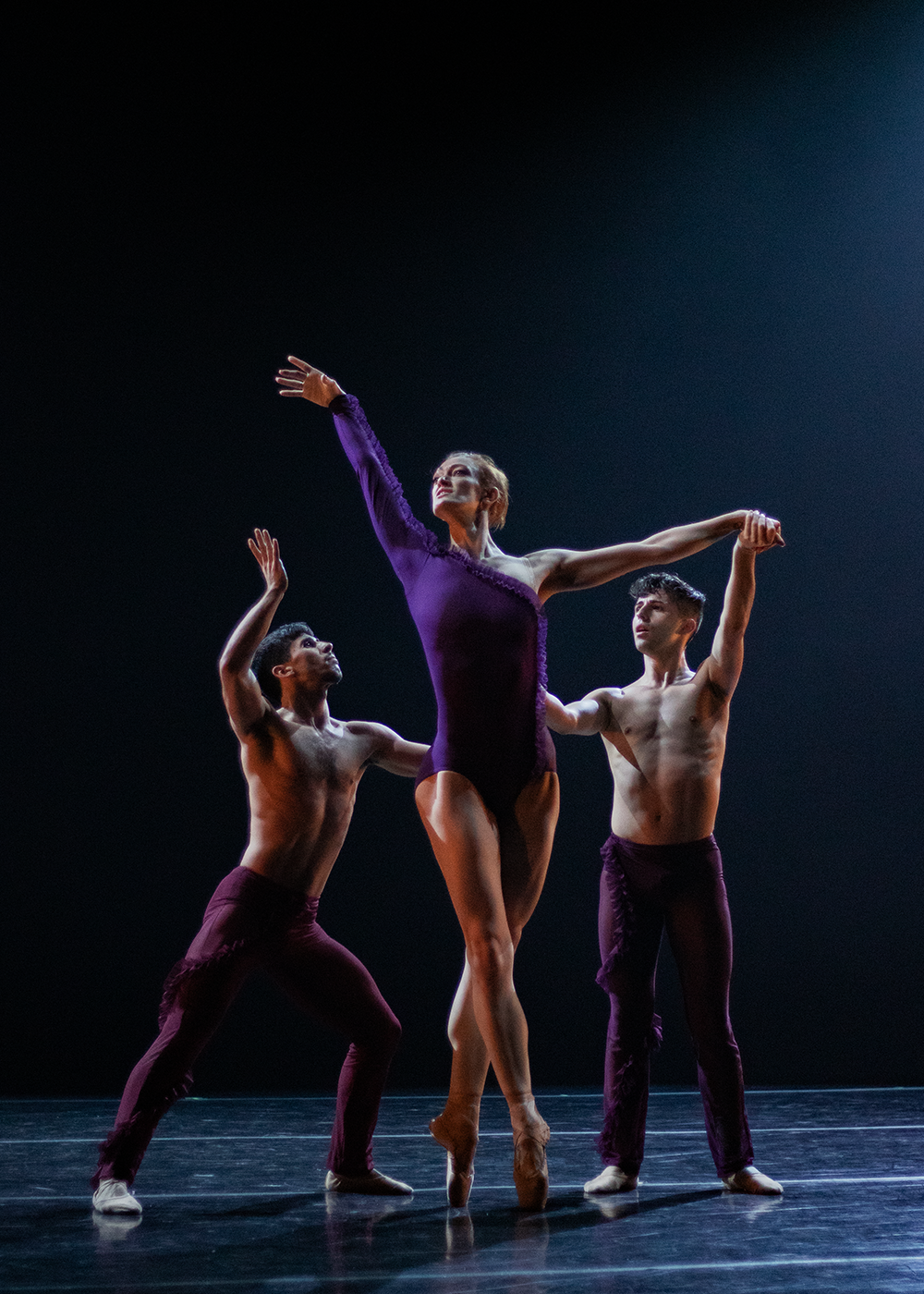Michael Cherry, Aeron Buchanan, and Angelo De Serra in Christine Darch’s emerald green leotards killed it in Rhoden’s “Gone.” Their deep sideway lunges, twists and hunched over walks gave the work a style of its own. When I saw it a decade ago, the dancers created a feeling of brotherhood. Here, De Serra commands the stage each time he appears, and together the three make a dance that celebrates individuality rather than common cause.
To Vivaldi’s “The Four Seasons” (Summer,) Rhoden’s “Choke” paired Christian Burse and Marissa Mattingly in a duet that was originally made for two men. Albeit superbly executed, it had the static look of a gymnastics competition.
Jillian Davis riveted the audience in Rhoden’s “Elegy.” Costumed by Christine Darch in a one shouldered asymmetrically skirted purple dress, her balletic training shone to Beethoven’s “Moonlight” sonata. She’s the tallest company artist in a company with a wide range of body types. The mostly vertical solo, replete with six-o’clock extensions, seemed made for her. Her phrases alternated smoothly between hard, angular open-legged pliés and soft, curvy attitudes and rolling torso.
The program’s world premiere, “This Time, With Feeling,” with David Rozenblatt’s original score, left me feeling confused. Its Barry Manilow-inflected arrangement sounded kitschy and outdated to my ear. I couldn’t find the throughline in the score, nor in the dance’s series of duets.











comments